Soil and near surface gas monitoring in Lancashire
Introduction
For many years we have been analysing soil gases and the air overlying the surface in relation to geological CO2 storage. The techniques used have proven highly successful for measuring baseline gas concentrations, locating and studying rates of gas escape from natural vents, and demonstrating the absence of leakage from storage projects. The methods are equally applicable to baseline and production monitoring of shale gas operations. There is a time–limited opportunity to gather baseline data, which should allow existing natural or man-made sources of gas to be distinguished from any emission resulting from shale gas operations.
Gas measurements
As part of our monitoring activities we have carried out sampling of near surface gases in the Fylde in areas where planning applications were submitted for the development of shale gas. This has included measuring soil gas concentrations and the flux (flow of gas) from the soil to the atmosphere. These measurements were made in order to help characterise baseline conditions prior to any shale gas development.
Soil gas was monitored by hammering a small–diameter steel tube into the ground to a depth of up to 1 m. Samples of the gas were then pumped to a portable field gas–analysing instrument or collected for laboratory analysis. The steel tube was then removed from the ground. Flux was determined by placing a small metal chamber onto the ground surface and measuring the flow of the gas into the chamber. Both soil gas and flux measurements only took a few minutes and caused very little disturbance to the soil or vegetation. The images below show each of the methods.
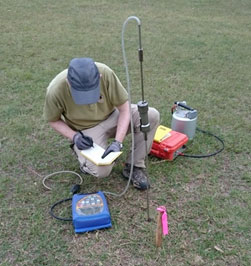
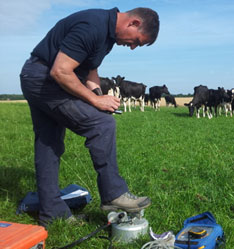
In the vicinity of one of the application sites (Roseacre), a total of 86 sample sites were measured for both soil gas and flux, and a further 45 samples sites were measured for soil gas only.
In the vicinity of a second application site (Preston New Road), a total of 66 sample sites were measured for both soil gas and flux.
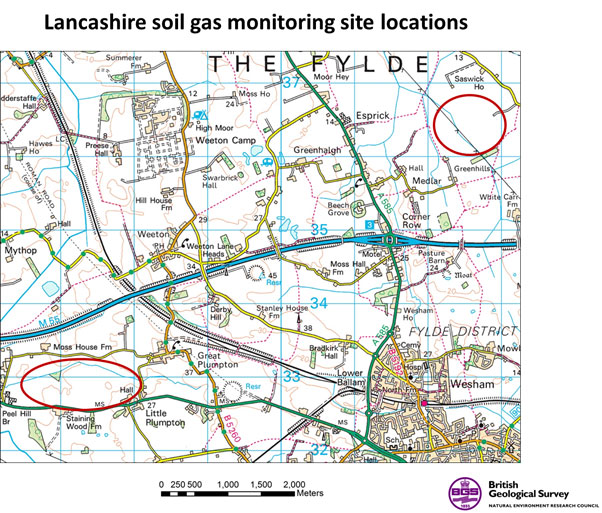
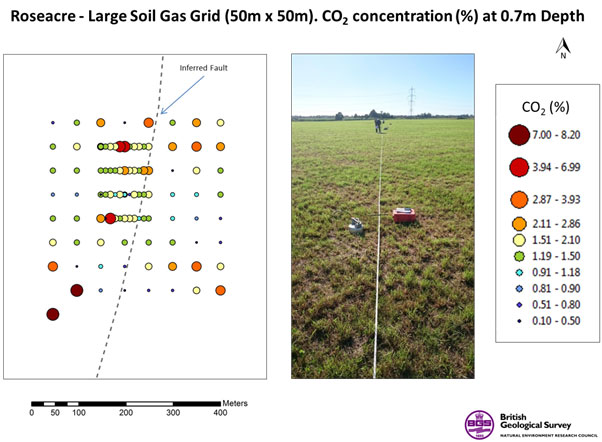
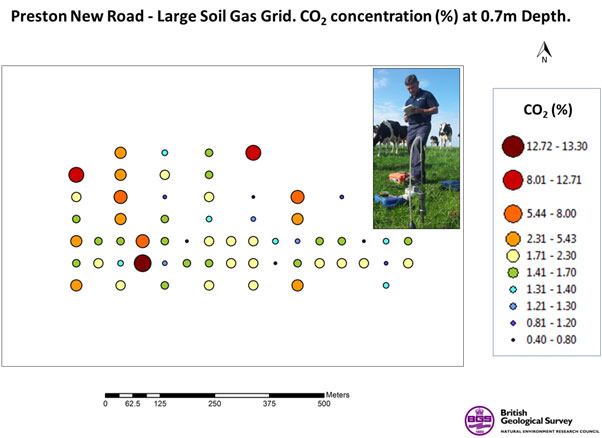
Contact
Contact BGS enquiries for further information.






